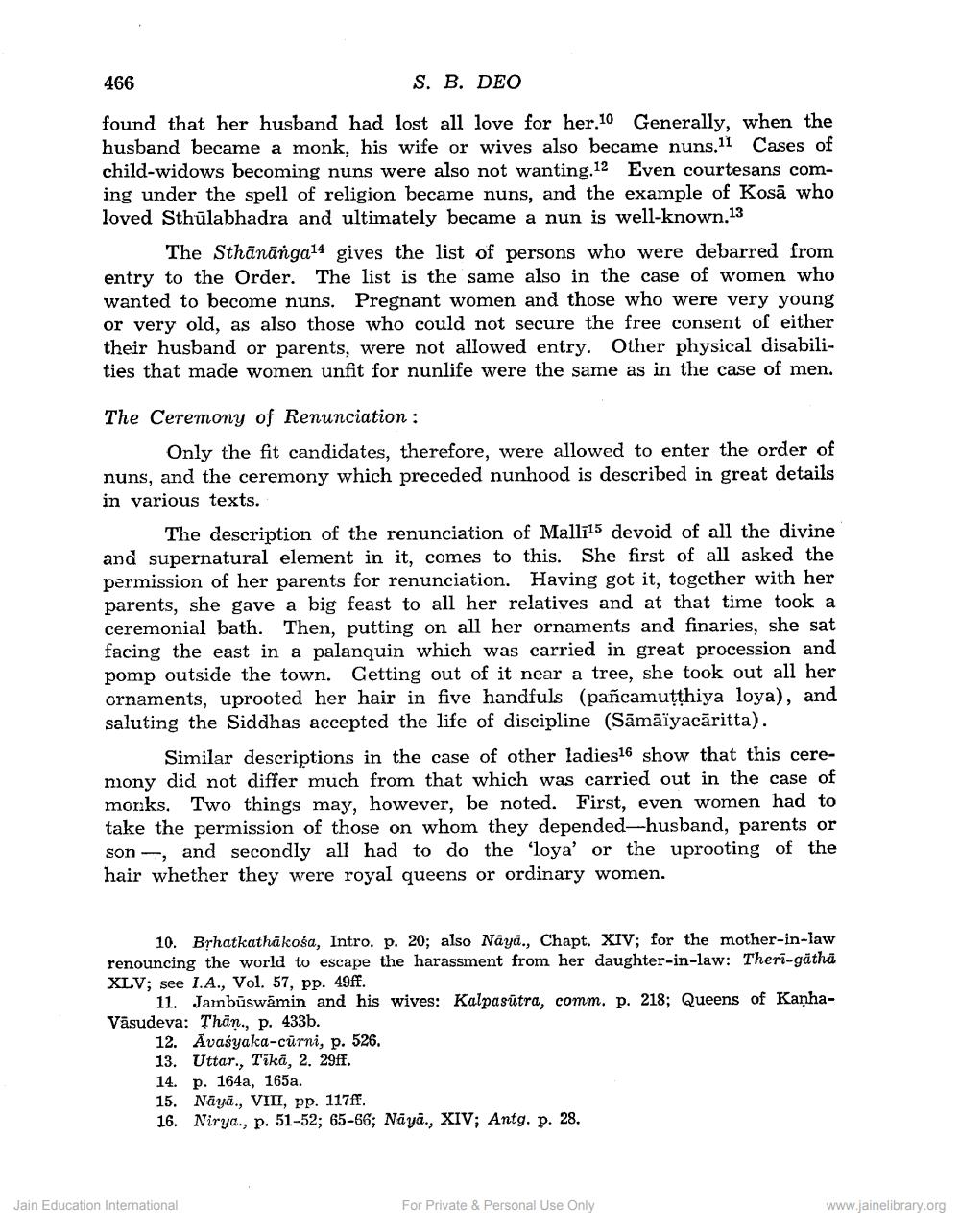________________
466
S. B. DEO
found that her husband had lost all love for her.10 Generally, when the husband became a monk, his wife or wives also became nuns.11 Cases of child-widows becoming nuns were also not wanting 12 Even courtesans coming under the spell of religion became nuns, and the example of Kosā who loved Sthūlabhadra and ultimately became a nun is well-known.13
The Sthānānga14 gives the list of persons who were debarred from entry to the Order. The list is the same also in the case of women who wanted to become nuns. Pregnant women and those who were very young or very old, as also those who could not secure the free consent of either their husband or parents, were not allowed entry. Other physical disabilities that made women unfit for nunlife were the same as in the case of men.
The Ceremony of Renunciation :
Only the fit candidates, therefore, were allowed to enter the order of nuns, and the ceremony which preceded nunhood is described in great details in various texts.
The description of the renunciation of Mallī15 devoid of all the divine and supernatural element in it, comes to this. She first of all asked the permission of her parents for renunciation. Having got it, together with her parents, she gave a big feast to all her relatives and at that time took a ceremonial bath. Then, putting on all her ornaments and finaries, she sat facing the east in a palanquin which was carried in great procession and pomp outside the town. Getting out of it near a tree, she took out all her ornaments, uprooted her hair in five handfuls (pañcamutthiya loya), and saluting the Siddhas accepted the life of discipline (Sāmāïyacăritta).
Similar descriptions in the case of other ladies16 show that this ceremony did not differ much from that which was carried out in the case of monks. Two things may, however, be noted. First, even women had to take the permission of those on whom they depended-husband, parents or son and secondly all had to do the 'loya' or the uprooting of the hair whether they were royal queens or ordinary women.
10. Brhatkathākoša, Intro. p. 20; also Nāyā., Chapt. XIV; for the mother-in-law renouncing the world to escape the harassment from her daughter-in-law: Theri-gatha XLV; see I.A., Vol. 57, pp. 49ff.
11. Jarnbūswämin and his wives: Kalpasūtra, comm. p. 218; Queens of KanhaVasudeva: Thān., p. 433b.
12. Avasyaka-cūrni, p. 526. 13. Uttar., Tikā, 2. 29ff. 14. p. 164a, 165a. 15. Nāyā., VIII, pp. 117ff. 16. Nirya., p. 51-52; 65-66; Naya., XIV; Antg. p. 28,
Jain Education International
For Private & Personal Use Only
www.jainelibrary.org




